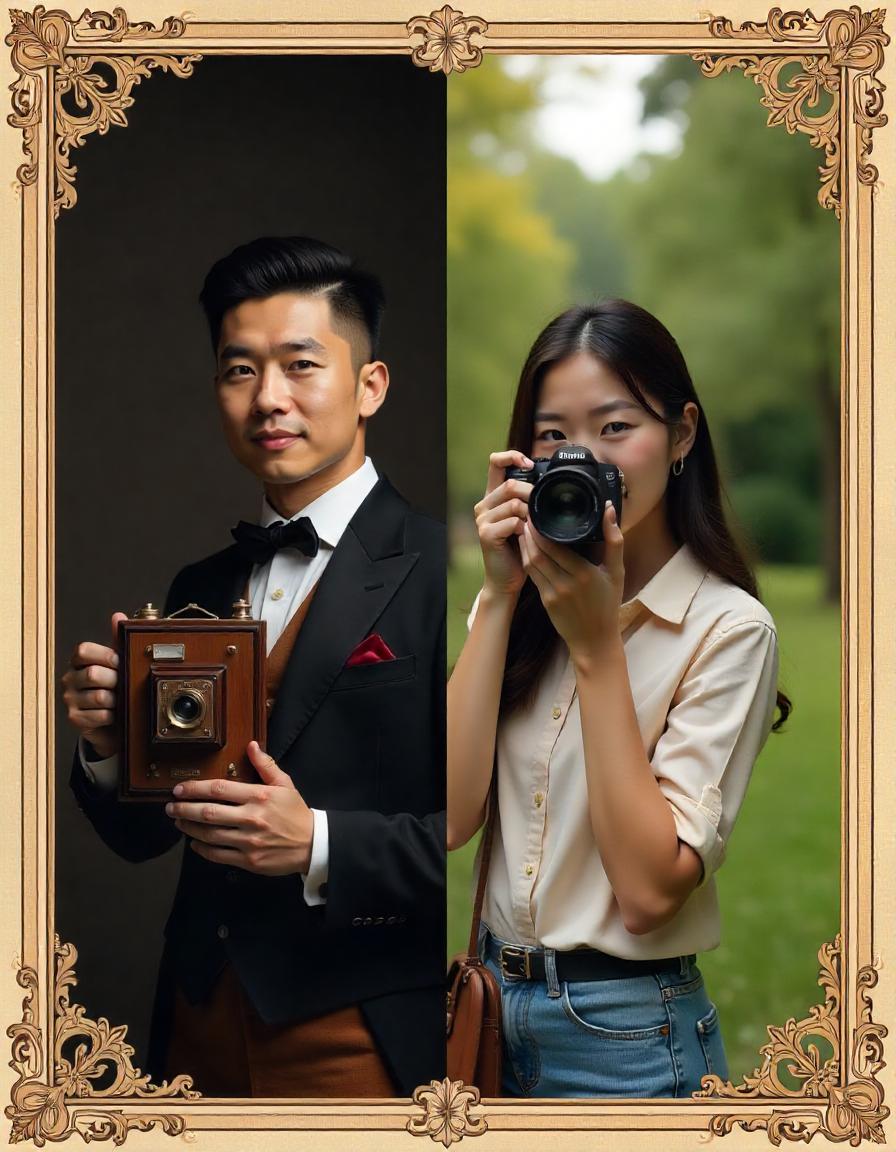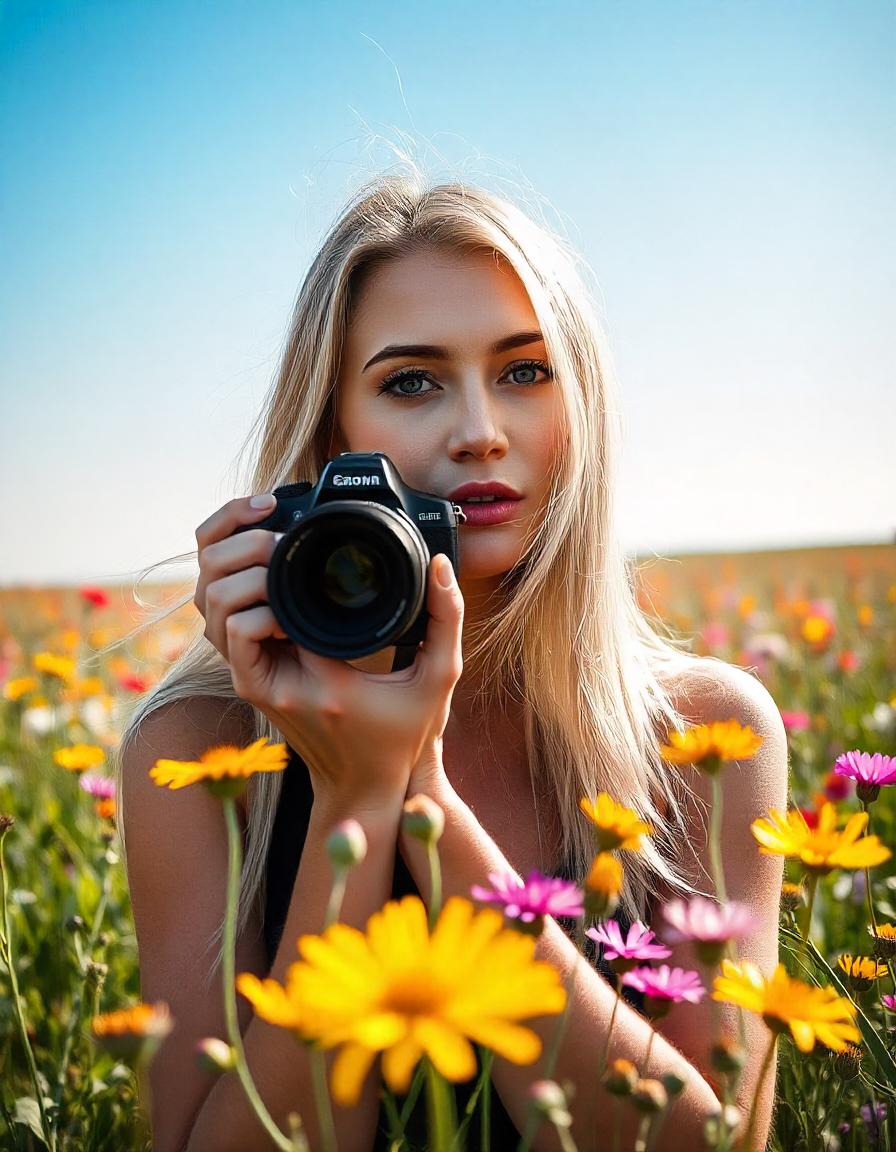Finding your dream camera can be tricky with so many models and features out there…

Transforming Portraits with Dynamic Backgrounds
Transforming Portraits are a staple of photography, and yet, they can sometimes feel static and uninteresting. A dynamic background can be the key to elevating your portrait photography and making it stand out. In this article, we’ll explore the power of backgrounds in portraits, the evolution of portrait photography, and how to choose and use dynamic backgrounds to create stunning images.
Understanding the Power of Backgrounds in Portraits
Backgrounds have the power to transform a portrait from ordinary to extraordinary. A simple, yet effective tool, a dynamic background can add depth, interest, and emotion to an image. It can also help to tell a story, set the mood, and create a sense of place. By understanding the importance of backgrounds in portraits, photographers can use them to great effect, creating images that engage and inspire.
Backgrounds can also be used to manipulate the viewer’s perception of the subject. A bold or striking background can draw attention away from the subject, creating a sense of mystery or intrigue a subtle or muted background can help to focus attention on the subject, creating a sense of intimacy or vulnerability. By understanding the psychology of backgrounds, photographers can use them to create a specific emotional response in the viewer.
Backgrounds do more than just look good; they can tell us about the person in the photo. A background that shows someone’s personality, interests, or job adds meaning to the image. This is especially useful in commercial or editorial photography, where the aim is to share a story or message.
The Evolution of Portrait Photography from Static to Dynamic
Portrait photography has undergone a significant evolution over the years, from static, formal portraits to more dynamic, expressive images. The rise of digital photography and social media has given photographers more freedom and flexibility to experiment with different styles and techniques. As a result, portraits are now more diverse and dynamic than ever before.
The shift towards more dynamic backgrounds is a key part of this evolution. Gone are the days of boring, plain backgrounds. Today, photographers are using creative, abstract, and even surreal backgrounds to add interest and depth to their images. This has opened new possibilities for portrait photographers, allowing them to create images that are more engaging and memorable.
The increasing popularity of street photography and documentary-style portraiture has also contributed to the trend towards more dynamic backgrounds. Photographers are now more likely to use available light, textures, and patterns to create unique and interesting backgrounds. This has added a new level of authenticity and realism to portrait photography, making it more relatable and engaging for viewers.
How Dynamic Backgrounds Can Elevate Your Portrait Photography
Dynamic backgrounds can elevate your portrait photography in several ways. First and foremost, they can add interest and depth to an image, drawing the viewer’s eye and creating a sense of visual tension. This can be particularly effective in portraits, where the goal is to create a sense of intimacy or connection with the subject.
Dynamic backgrounds can also help to break up the monotony of a static portrait. A bold or striking background can add a sense of energy and movement to an image, creating a sense of dynamism and vitality. On the other hand, a soft or plain background can make the image feel calm and peaceful.
Besides looking good, dynamic backgrounds can set the scene and mood in a portrait. When a background shows the subject’s personality or interests, it adds meaning and makes the image more interesting and memorable.
The Psychology of Backgrounds How It Affects the Viewer’s Perception
The psychology of backgrounds is a complex and multifaceted topic, and one that has been extensively studied in the field of psychology. In essence, the background of an image can influence the viewer’s perception of the subject in several ways.
the background can affect the viewer’s attention. A bold or striking background can draw the viewer’s eye away from the subject, creating a sense of distraction or confusion. Conversely, a subtle or muted background can help to focus the viewer’s attention on the subject, creating a sense of clarity and focus.
The background can also affect the viewer’s emotional response to the image. A background that is bright and cheerful can create a sense of happiness or optimism, while a background that is dark or muted can create a sense of sadness or melancholy. By understanding the psychology of backgrounds, photographers can use them to create a specific emotional response in the viewer.
the background can affect the viewer’s perception of the subject’s personality or character. A background that reflects the subject’s personality, interests, or profession can add depth and meaning to the image, making it more engaging and memorable for the viewer.
Choosing the Right Background Tips and Tricks for Photographers
Choosing the right background is a crucial step in creating a dynamic and engaging portrait. Here are a few tips and tricks for photographers:
- Consider the subject’s personality and character. A background that reflects the subject’s personality can add depth and meaning to the image.
- Think about the mood or atmosphere you want to create. A bold or striking background can create a sense of energy and movement, while a subtle or muted background can create a sense of serenity and peacefulness.
- Experiment with different textures and patterns. A background with texture or pattern can add interest and depth to the image, creating a sense of visual tension.
- Consider using available light. Natural light can create a beautiful, ethereal quality to the image, while artificial light can add a sense of warmth and intimacy.
By following these tips and tricks, photographers can create dynamic and engaging backgrounds that enhance their portraits and tell a story.
Creative Ways to Use Dynamic Backgrounds in Portrait Photography
There are many creative ways to use dynamic backgrounds in portrait photography.
- Use a blurred or out-of-focus background to create a sense of depth and dimensionality.
- Experiment with different angles and perspectives. Shooting from an unusual angle or perspective can add interest and depth to the image.
- Use a bold or striking background to create a sense of energy and movement. This can be particularly effective in action or sports photography.
- Experiment with different lighting effects. Using a light or shadow can create a sense of drama and tension in the image.
By thinking creatively about dynamic backgrounds, photographers can create unique and engaging portraits that stand out from the crowd.
From Studio to Location Exploring Dynamic Background Options
Dynamic backgrounds can be used in a variety of settings, from the studio to the location. Here are a few options to consider:
- Use a studio with a dynamic background. Many studios offer a range of backgrounds, from plain to abstract, that can add interest and depth to the image.
- Shoot on location. A location shoot can offer a range of dynamic backgrounds, from urban landscapes to natural environments.
- Experiment with different textures and patterns. A background with texture or pattern can add interest and depth to the image, creating a sense of visual tension.
- Consider using a backdrop. A backdrop can be a simple and effective way to add a dynamic background to the image.
By exploring different dynamic background options, photographers can create a range of exciting and engaging portraits.
Mastering the Art of Composition Balancing Subject and Background
Mastering the art of composition is crucial for creating a dynamic and engaging portrait. Here are a few tips to help you balance the subject and background:
- Consider the rule of thirds. Divide the image into thirds both horizontally and vertically and place the subject off-center.
- Experiment with different framing techniques. Using a frame or border can help to separate the subject from the background, creating a sense of depth and dimensionality.
- Use negative space to create a sense of simplicity and elegance. Leaving some empty space around the subject can create a sense of calm and serenity.
- Experiment with different angles and perspectives. Shooting from an unusual angle or perspective can add interest and depth to the image.
By mastering the art of composition, photographers can create balanced and harmonious portraits that showcase the subject and background equally.
Transforming Portraits with Dynamic Backgrounds
Conclusion
In conclusion, dynamic backgrounds can be a powerful tool for photographers, adding depth, interest, and emotion to portraits. By understanding the power of backgrounds, the evolution of portrait photography, and how to choose and use dynamic backgrounds, photographers can create stunning images that engage and inspire. Whether shooting in the studio or on location, photographers can use creative backgrounds to tell a story, set the mood, and create a sense of place. With practice and patience, photographers can master the art of composition, balancing the subject and background to create a dynamic and engaging portrait.
Read Next: Transform Your Brand with Stunning 3D Product Photography



